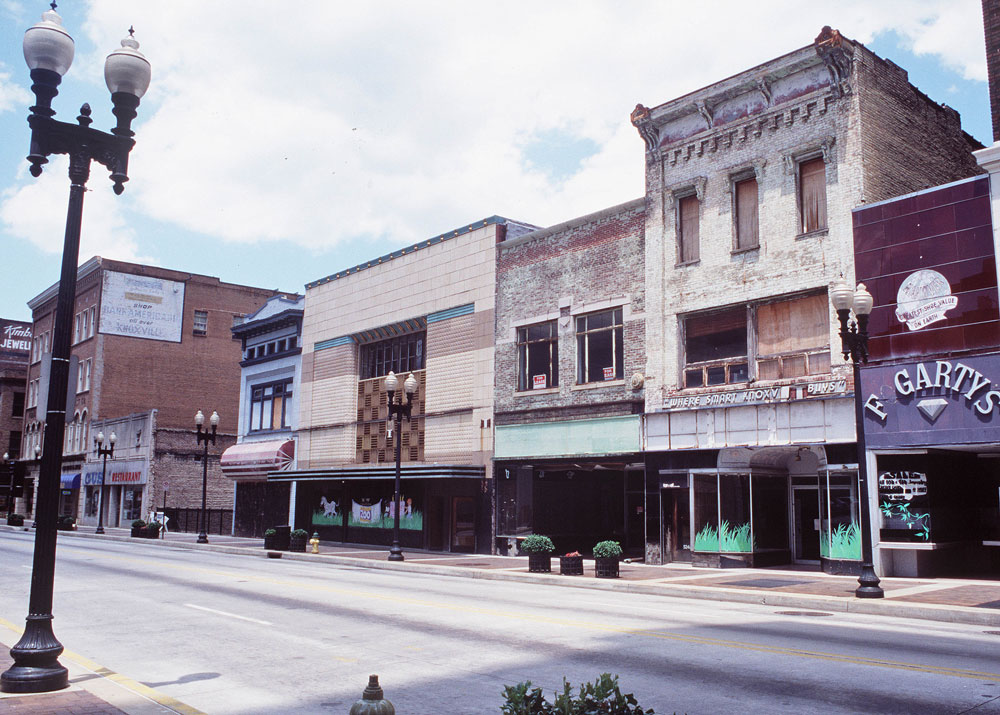Planning's 60th Anniversary
This year, we celebrate Planning’s 60th year of service to the community.
Formed in 1956 by combining the Knoxville Planning Commission and Knox County Planning Commission, Planning is responsible for comprehensive county-wide planning and administration of zoning and land subdivision regulations.
Planning got its start with eight commissioners and 14 staff in 1956. Over its six decades, the agency has been led by 10 executive directors, seven deputies, and 189 planning commissioners. Quite different from 1956’s version, today’s Planning is comprised of 15 commissioners and 35 staff.
A lot of local growth and change has occurred since the early days of Planning’s role in land use planning. Notable in the 1960s, we saw the city grow with annexations that changed the size and population of Knoxville. The largest was in 1962 with the addition of Fountain City, Bearden, West Hills, Norwood, and Gresham.
Plans from the past paved the way for our work today, such as the first small area plans from the 1970s that evolved into today’s sector plans.
The Eighties
The 1980s were formative for Planning. Staff began working with Knoxville Utilities Board, City of Knoxville, and Knox County to create a computerized mapping system for the area, one of the first of its kind in the country. That program and other new and innovative electronic functions changed the way we worked and are still essential to our work today.
The ‘80s also saw Planning staff create the Downtown Plan and contribute to the Waterfront Task Force. Terry Gilhula, Information and Research Manager, joined Planning staff around the time the Downtown Plan was adopted. He recalled the plan seemed very ambitious for an economically struggling downtown where many buildings were vacant, some abandoned, and others underutilized. Markedly different from the landscape today, there were fewer retail shops, restaurants, and residents. We’re grateful for the visionaries and risk-takers that embraced the big ideas in the Downtown Plan – developers, pioneer residents, planners, and all those who have come together over the years to create a regional destination.

Gay Street Pre-Renovations
The Nineties
The 1990s were equally important. More than half of Knox County was developed, making Planning’s focus on quality growth more important than ever. Plans were developed for the Old City, suggesting various paths to revitalization. Downtown plans continued to evolve, and the 1995 version drove many improvements visible today.
Planning also helped guide protective measures for several historic neighborhoods that were once run down, but are now highly sought after.
Jeff Welch, Director of the Transportation Planning Organization, housed at Planning, remarked on the fact that planners can work for years on a project without seeing any pay-off. Because of the long-term nature of the work, many of the projects he's worked on in the last three decades have taken years to complete. However, long-term planning and frequent reassessment is essential to the well-being of our region. Pellissippi Parkway is a prime example. The extension of the parkway from I-40 into Blount County took nearly 20 years to complete, but has had a significant impact on the region. Pressure was taken off Alcoa Highway, it allowed for easier and more convenient travel to the airport and Great Smoky Mountains National Park, and it changed land use in Blount, Knox, and Anderson counties.

While Market Square was once full of vacant and underused buildings, it is now home to restaurants, retail, office space, and a variety of special events.
Today
In more recent years, Planning has continued working on projects to ensure that our region remains a great place to live, work, and play. Smart Trips and Safe Routes to School programs began, the first Open Streets events were held, and the first joint Knoxville-Knox County Parks, Recreation, and Greenway Plan was adopted. TPO started coordinating air quality strategies for a seven-county region, and Plan ET was completed.
These accomplishments, and dozens of others, prove Planning’s commitment to maintaining a great quality of life for East Tennesseans.
When it opened its doors in 1956, Planning was tasked with defining social, economic, and physical goals for the community, and those themes still guide our work today. Looking back, we are proud to have been a part of Knox County’s growth and progress. As we move forward, some of our work mirrors what was being done as far back as the first plan for the City of Knoxville in 1930. Planners then recognized the opportunity for an unparalleled park system, the need for outdoor spaces and community centers, the reclamation of the waterfront, and a heightened focus on upcoming population growth. These issues, along with others that have developed over the years, continue to be prominent in our work today. We are now looking forward to the overhaul of the city’s zoning code and the opportunities it will bring. We expect it to change the way much of our work is done and that it will be a highlight talked about at future anniversaries!
Cover Photos: (L) Gay Street circa 1950s, (R) © 2016 Google